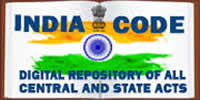About us
Functions and Organizational Set-up
The Ministry of Textiles is responsible for policy formulation, planning, development, export promotion and trade regulation of the Textiles Industry. This includes all natural and man made cellulosic fibres that go into the making of textiles, clothing, and handicrafts. The Ministry is headed by a Secretary, who is assisted in the discharge of duties by four Joint Secretaries, , the Development Commissioners for Handlooms and Handicrafts, the Economic Advisor, the Textiles Commissioner and the Jute Commissioner.
The Ministry has the vision to build state of the art production capacities and achieve a pre-eminent global standing in manufacture and export of all types of textiles including technical textiles, jute, silk, cotton and wool and develop a vibrant handlooms and handicrafts sector for sustainable economic development and promoting and preserving the age old cultural heritage in these sectors.
Our Mission
- To promote planned and harmonious growth of textiles by making available adequate fibres to all sectors.
- To promote technological upgradation for all types of textiles including technical textiles, jute, silk, cotton and wool.
- To promote skills of all textile workers, handloom weavers and handicrafts artisans, creation of new employment opportunities and development of new designs to make these sectors economically sustainable.
- To ensure proper working environment and easy access to health care facilities and insurance cover to weavers and artisans to achieve better quality of life.
- To promote exports of all types of textiles and clothing and handicrafts and increase India’s share of world exports in these sectors.
The Ministry strives to make available adequate raw material to all sectors of the Textiles Industry, to augment the production of fabrics at reasonable prices from the organised and decentralised sectors, to lay down guidelines for a planned and harmonious growth of various sectors with special emphasis on the development of the handlooms sector due to its large employment potential, to monitor the techno-economic status of the industry and to provide the requisite policy framework for modernization and rehabilitation.
FUNCTIONAL AREAS
- Handicrafts
- Handlooms
- Skill Development Programme
- Export Promotion
- International Trade
- Fashion and Textiles Education (NIFT / SVPISTM)
- Research and Development (TRA's)
- The Planning & Economic Analysis
- Budget & Finance matters


















